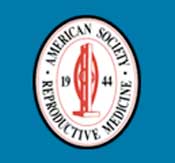Breast Cancer In Postmenopausal Women: What is the Real Risk?
(ABSTRACT) OCTOBER 2009
Powerpoint presentation by Dr. Winnifred Cutler at ASRM Annual Meeting, October 19-21, 2009 held in Atlanta GA.

Learn more about pheromones and books from Athena Institute
* New study from Dr. Cutler and Dr. James Kolter in 2012; Logical Measurement Methods Yield Lower Breast Cancer Risk - see video/click here
The American Society of Reproductive Medicine is a national and international medical society and the recognized leader for multidisciplinary information in the field of reproductive medicine. ASRM members reside in all 50 of the United States and in over 100 other countries. Members include obstetrician/gynecologists, urologists, reproductive endocrinologists, embryologists, mental health professionals, internists, nurses, practice administrators, laboratory technicians, pediatricians, research scientists, and veterinarians
Abstract:
Objective: We believe the true incidence of breast cancer is much below the 10-13% incidence generally referred to. We sought to identify the true incidence of breast cancer among healthy postmenopausal women.
Design: We analyzed 18 recently published studies covering 1,865,430 women and compared these findings to the generally accepted risk estimate.
Materials and Methods: The breast cancer incidence found in each study was calculated by dividing the total number of women in whom cancer was found by the total number of women studied yielding the percentage of women with breast cancer.
Results: Of the 18 studies we analyzed, 16 lasted between 2.6 and 16 years and showed a first breast cancer rate lower than 2.9% during the time period studied. One from France showed 3.3% in 9 years, one from Sweden 5.96% over 25 years. Actual breast cancer incidence among screening, RCT, and observational studies thus appears to be lower than estimated risk. Our review of SEER methodology identifies errors which can explain why risk ESTIMATES differ from these findings.
Conclusions: The true incidence of postmenopausal breast cancer appears substantially lower than generally estimated.
Authors: 1. Winnifred B. Cutler, PhD, 2. Regula E. Burki, MD, FACOG, 3. Elizabeth Genovesse, MD, MBA, FACOEMU. Penn, 4. Millicent G. Zacher, M.Ed, DO FACOGT. Jeferson U.
1Athena Institute for Women's Wellness, 1211 Braefield Road Chester Springs, PA, United States, 19425;
2FACOG, Schänzlistrasse 33 Berne, Berne, Switzerland, CH-3013;
3University of Pennsylvania Medical School,, 3400 Spruce St. Phila., PA., United States, 19004 and 4Reproductive Endocrinology and Infertility, Thomas Jefferson University, 834 Chestnut St Suite 300 Phila., PA., United States, 19107.
" My research has consistently focused on what behavior a woman can engage in to increase her power, well-being, and vitality."
---Winnifred B. Cutler, Ph.D.
A portion of the profits from our book and pheromone sales helps to fund Athena's on-going research.